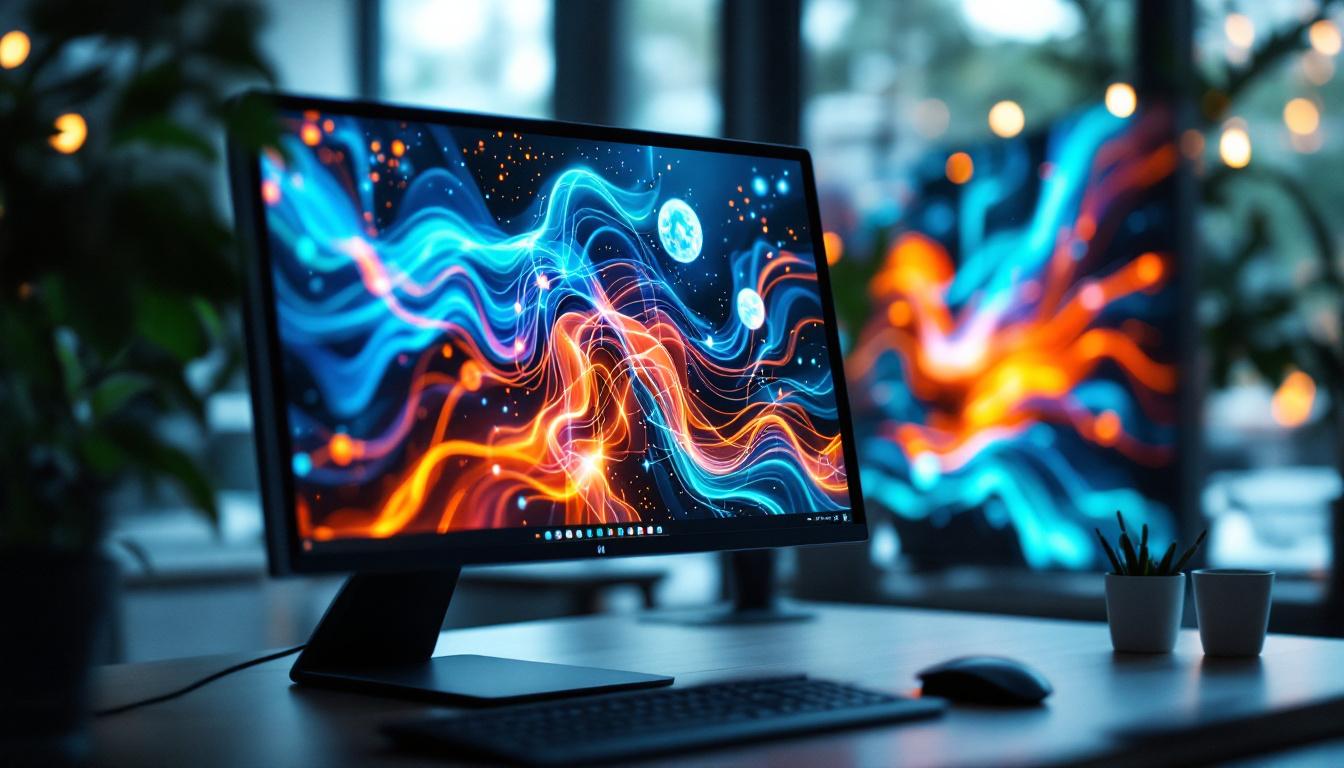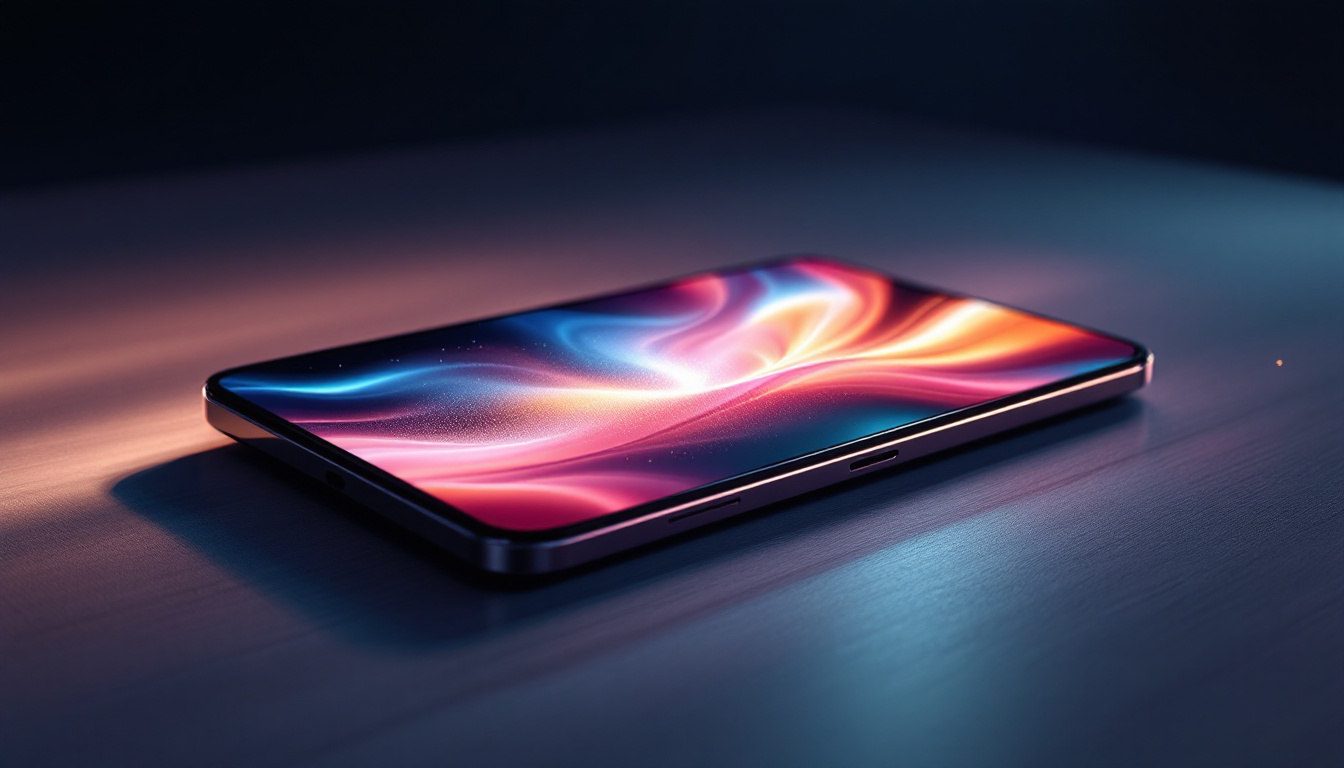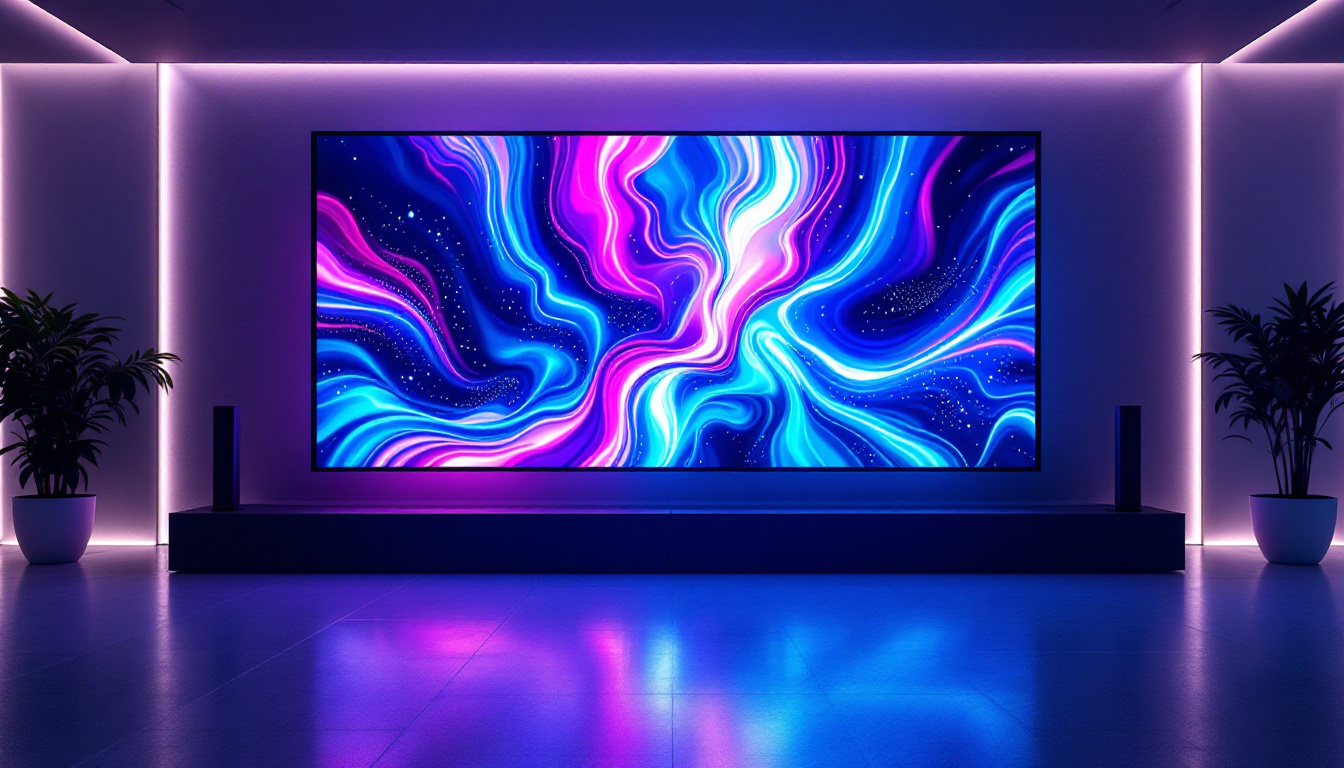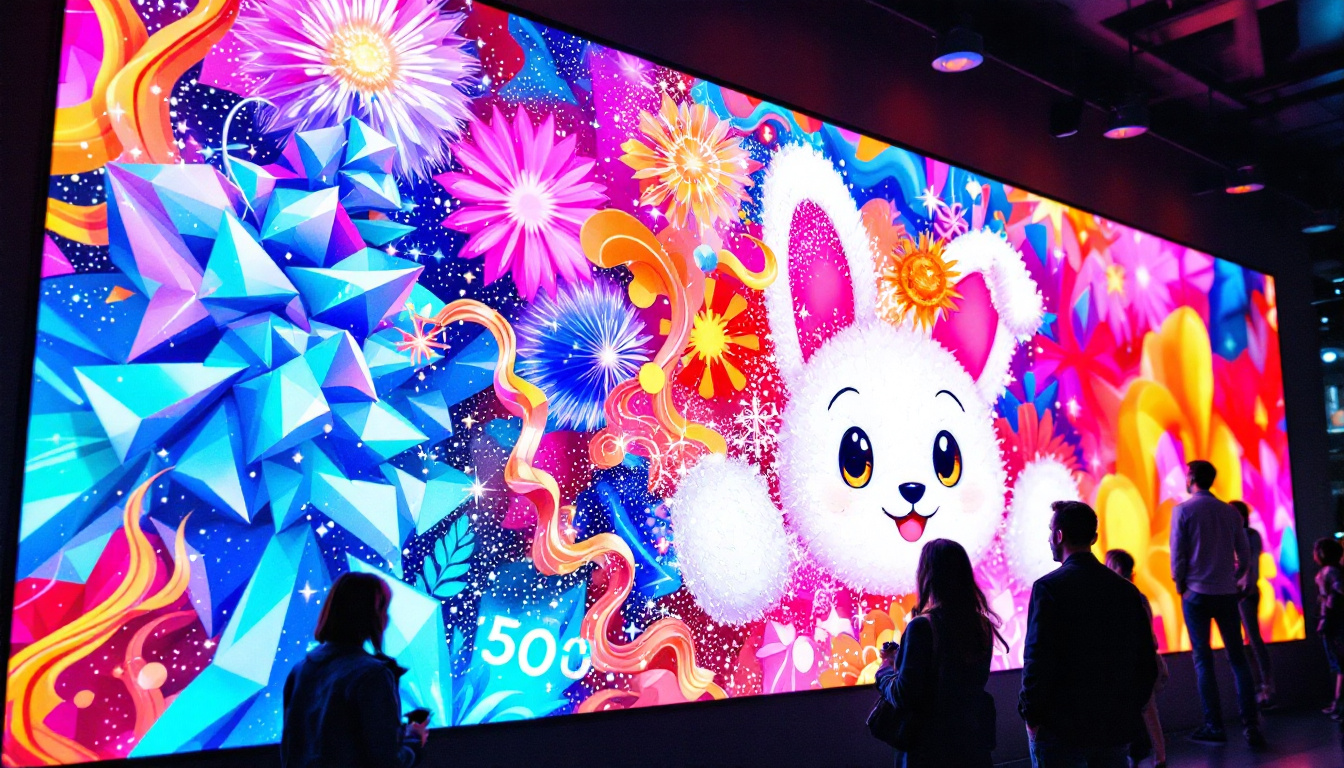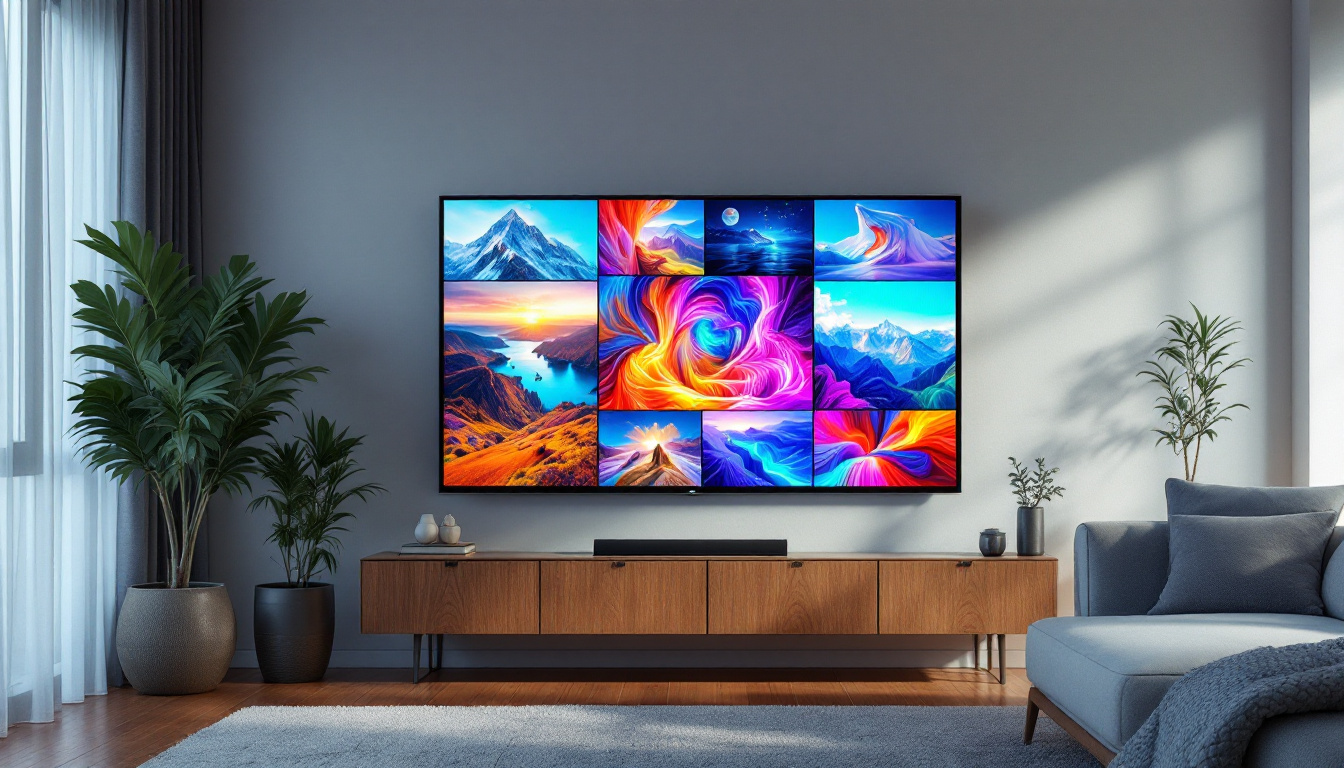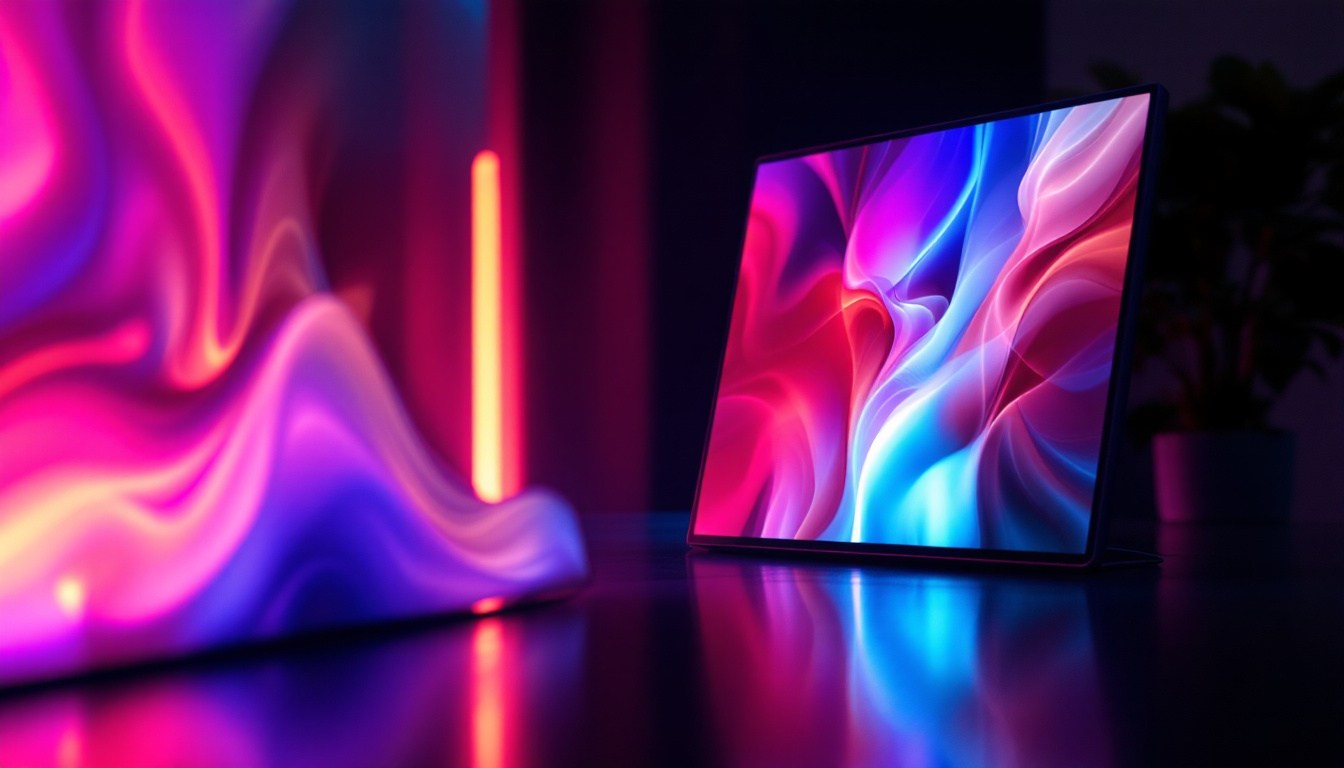In the rapidly evolving landscape of computer technology, touch screen monitors have become an essential component for both professional and personal use. HP, a leading name in the computing industry, offers a range of touch screen computer monitors that combine sleek design with advanced LED display technology. This article delves into the intricacies of HP’s touch screen monitors, focusing on their LED displays, to help you understand what sets them apart and why they might be the right choice for your computing needs.
Understanding LED Display Technology in HP Touch Screen Monitors
LED, or Light Emitting Diode, technology has revolutionized the way displays are designed and experienced. Unlike traditional LCD monitors that use cold cathode fluorescent lamps (CCFL) for backlighting, LED monitors utilize light-emitting diodes, offering numerous advantages in terms of brightness, energy efficiency, and color accuracy.
What Makes LED Displays Superior?
LED displays provide a brighter and more vibrant image compared to older LCD technologies. This is particularly important for touch screen monitors, where clarity and responsiveness are critical. HP’s LED touch screen monitors typically feature IPS (In-Plane Switching) panels, which enhance viewing angles and color reproduction, making them ideal for collaborative work environments and creative applications.
Moreover, LED backlighting allows for thinner and lighter monitor designs, which is a significant benefit for users who require flexibility and portability. Energy consumption is also reduced, contributing to lower operating costs and a smaller environmental footprint. The longevity of LED technology means that users can enjoy their monitors for years without the need for frequent replacements, further enhancing the value of investing in HP’s touch screen monitors.
Types of LED Backlighting in HP Monitors
HP incorporates various LED backlighting techniques in their touch screen monitors, including edge-lit and full-array backlighting. Edge-lit LED displays position LEDs along the edges of the screen, enabling ultra-thin designs but sometimes compromising uniformity of brightness. Full-array backlighting, on the other hand, places LEDs directly behind the screen, offering superior brightness uniformity and contrast ratios.
For users prioritizing image quality, HP’s higher-end touch screen monitors often utilize full-array LED backlighting with local dimming technology. This feature allows selective dimming of LED zones, enhancing contrast and delivering deeper blacks, which is especially beneficial for multimedia tasks and detailed graphic work. Additionally, the color gamut of these monitors is often expanded, allowing for more vibrant colors that can accurately represent images and videos, making them a favorite among graphic designers and video editors who require precision in their visual outputs.
Furthermore, HP’s commitment to innovation is evident in their integration of anti-glare coatings and advanced touch technology in their monitors. This ensures that users can work comfortably in various lighting conditions without straining their eyes. The touch responsiveness is also finely tuned to provide a seamless experience, allowing for fluid navigation and interaction, which is essential in educational settings and professional presentations. As a result, HP touch screen monitors not only deliver exceptional visual quality but also enhance user engagement and productivity across a wide range of applications.
Key Features of HP Touch Screen Monitors with LED Displays
HP’s touch screen monitors are designed to meet diverse user requirements, from business professionals to creative artists and casual users. The integration of LED display technology enhances these features, making the monitors versatile and efficient.
Responsive Touch Technology
One of the standout features of HP’s touch screen monitors is their highly responsive touch interface. Using capacitive touch technology, these monitors support multi-touch gestures, allowing users to interact with their devices intuitively. This responsiveness is crucial in environments such as retail, education, and healthcare, where quick and accurate touch input can improve productivity and user experience.
The LED display’s brightness and clarity complement the touch functionality, ensuring that users can see and interact with the screen comfortably under various lighting conditions. Moreover, the touch screens are designed to minimize latency, providing an almost instantaneous response to user inputs. This feature is particularly beneficial in fast-paced settings, where every second counts, such as during presentations or interactive demonstrations.
High Resolution and Color Accuracy
HP touch screen monitors often come with Full HD (1920×1080) resolution or higher, including options for 4K UHD displays. The LED technology ensures that colors are vivid and accurate, which is essential for tasks like photo editing, video production, and graphic design.
Many HP monitors feature factory-calibrated color settings and support wide color gamuts such as sRGB and AdobeRGB. This level of color precision is a significant advantage for professionals who demand consistent and reliable color performance. Additionally, the high pixel density in these monitors allows for sharper images and finer details, making them ideal for intricate design work or detailed data presentations. Users can enjoy a more immersive viewing experience, whether they’re watching high-definition videos or analyzing complex graphics.
Ergonomic and Design Considerations
HP understands that comfort and usability are paramount when it comes to monitors. Their touch screen models often include adjustable stands that allow users to tilt, swivel, and adjust the height of the display. Some models also support VESA mounting, providing flexibility for different workspace setups.
The slim profile enabled by LED backlighting contributes to a modern aesthetic that fits seamlessly into any office or home environment. Additionally, the anti-glare coating on many HP touch screen monitors reduces reflections, enhancing visibility and reducing eye strain during extended use. The monitors are also designed with cable management features, helping to maintain a clean and organized workspace. With a variety of connectivity options, including HDMI, DisplayPort, and USB-C, users can easily connect multiple devices, enhancing their productivity and ensuring a clutter-free setup. This thoughtful design approach not only elevates the functionality of the monitors but also enhances the overall user experience, making them a preferred choice for a wide range of applications.
Benefits of Choosing HP Touch Screen Monitors for Business and Personal Use
Whether for professional environments or personal computing, HP touch screen monitors with LED displays offer a range of benefits that make them a compelling choice.
Enhanced Productivity and Collaboration
In business settings, touch screen monitors facilitate more dynamic interactions. For example, in conference rooms or collaborative workspaces, multiple users can engage with the screen simultaneously, making presentations and brainstorming sessions more interactive and efficient.
HP’s LED displays ensure that content is clear and vibrant, which is essential when sharing detailed documents, charts, or multimedia content. The combination of touch responsiveness and high-quality visuals can significantly improve workflow and decision-making processes.
Improved User Experience in Education and Healthcare
Educational institutions benefit from HP touch screen monitors by enabling interactive learning experiences. Students can engage directly with educational software, enhancing engagement and retention. The durability and responsiveness of HP’s touch screens ensure they withstand frequent use in classroom settings.
In healthcare, touch screen monitors are used for patient check-ins, medical imaging, and electronic health records management. The clarity provided by LED displays aids in accurate data visualization, while the responsive touch interface streamlines operations.
Entertainment and Creative Applications
For home users, HP touch screen monitors with LED displays offer an immersive experience for gaming, streaming, and creative projects. The high resolution and color accuracy make them suitable for photo and video editing, while the touch functionality adds an intuitive layer of control.
LED technology also supports faster refresh rates and lower response times in some models, which can enhance gaming performance by reducing motion blur and input lag.
Considerations When Purchasing an HP Touch Screen Monitor with LED Display
Choosing the right touch screen monitor involves evaluating several factors to ensure it meets your specific needs.
Screen Size and Resolution
HP offers touch screen monitors in various sizes, typically ranging from 21.5 inches to 27 inches or more. Larger screens provide more workspace and better visibility, but they also require more desk space. Resolution should be matched to screen size; for instance, a 27-inch monitor benefits significantly from a 4K resolution to maintain image sharpness.
Connectivity Options
Modern HP touch screen monitors come equipped with multiple connectivity options, including HDMI, DisplayPort, USB-C, and USB hubs. USB-C ports are particularly valuable for users who want to connect laptops or mobile devices with a single cable that carries video, data, and power.
Touch Technology and Compatibility
Ensure the touch technology is compatible with your operating system and applications. HP’s monitors typically support Windows Ink and other touch-enabled software environments, but it’s important to verify compatibility, especially if using specialized software or alternative operating systems.
Price and Warranty
HP touch screen monitors with LED displays are available across a range of price points. Higher-end models with 4K resolution, advanced color calibration, and full-array backlighting will naturally cost more. Consider your budget alongside the features you need.
HP generally offers robust warranty and support services, which can be a deciding factor for business users who require dependable equipment with minimal downtime.
Conclusion: The Future of Interactive Displays with HP Touch Screen Monitors
HP’s touch screen computer monitors equipped with LED display technology represent a fusion of innovation, functionality, and design. Their bright, energy-efficient LED backlighting combined with responsive touch capabilities makes them suitable for a wide array of applications—from professional environments demanding precision and collaboration to personal use requiring versatility and entertainment quality.
As touch technology continues to advance and LED displays become even more sophisticated, HP is well-positioned to deliver monitors that enhance user interaction and visual experience. Whether upgrading an office setup, enhancing a classroom, or creating a home entertainment hub, understanding the benefits and features of HP’s touch screen LED monitors is crucial to making an informed purchase decision.
Investing in an HP touch screen monitor means embracing a future where screens are not just viewed but interacted with, enabling more natural, efficient, and engaging computing experiences.
Discover the Future of LED Display Technology with LumenMatrix
As you consider the benefits of HP touch screen monitors for your interactive display needs, we invite you to explore the possibilities with LumenMatrix. As a pioneer in LED display technology, LumenMatrix offers an array of innovative solutions that can further enhance your visual experiences. From captivating Indoor and Outdoor LED Wall Displays to versatile Vehicle and Floor LED Displays, our products are designed to make a lasting impression. Embrace the future of visual communication with our Custom, All-in-One, and Transparent LED Displays, perfect for any application that demands high impact and clarity. Check out LumenMatrix LED Display Solutions today and see how we can transform your space into a dynamic and engaging environment.

